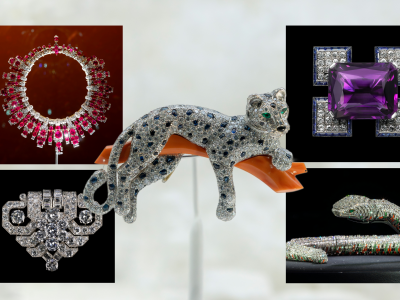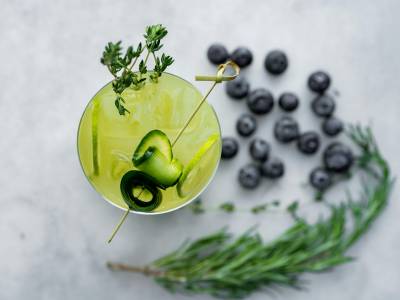Before you reach for your bikini, it turns out that the Japanese passion for shinrin-yoku, or “forest bathing” – hotly tipped as one of this year's emerging wellness trends – has nothing at all to do with jumping in a hot tub in the woods.
The popularity of Japanese wellness traditions
14th March 2015
The Japanese have much to teach us about living well, which explains why its wellness traditions are catching on across the world
Rather, it means taking a mindful walk in the forest, communing with nature, going offline to reconnect with the natural world, wandering, clearing one’s mind and immersing oneself in nature’s sounds, smells and textures. In Japan, forest bathing has long been recognised as a legitimate treatment for stress and to promote good health, but now spa-lovers from the US to the UK are making it their own and rolling out their mats for woodland yoga and taking barefoot walks with “forest concierges”.
“What you take in through the eyes can affect your wellness and mental health as much as anything,” explains Colin Farnden spa director at Armathwaite Hall Country House Hotel & Spa in England’s Lake District. “Any opportunity to really bathe in the natural environment is going to help with relaxation and general wellbeing.” Located on beautiful Bassenthwaite Lake in the north of the region, Armathwaite encourages guests to make the most of the 400-acre estate by “taking the spa outside” and embracing forest bathing through exercises such as pranayama (yogic breathing). “Our yoga instructor has picked out a number of spots around the estate with views directly of the lake or of the mountains [where this is practised], each chosen for the calmness and feelings they evoke,” Farnden explains. “We really do see people enlivened by coming here and really enjoying the nature.”
Japanese wellbeing traditions are not new to global spa menus. In 2008, The Dolder Grand in Zurich opened its stunning Foster + Partners-designed spa, which features specially commissioned baths inspired by the geothermal black-sand baths found on the beaches of Kyushu in southern Japan. In Kyushu, visitors lie down on the beach in cotton yukata (kimonos) and are buried in warm sand, which acts like a sauna. At the Dolder Grand Spa, guests wrapped in a towel lie on the heated pebbles of the “sunaburo” baths. “The pebbles help activate the reflex points and meridians and this has an overall relaxing and balancing effect on the body,” explains spa director Therese Martirena.
Also focused on the body’s pressure points, shiatsu massage is perhaps the best known of Japanese traditional treatments to have been incorporated and adapted for wellbeing rituals throughout the world. Dolder Grand Spa offers “bamboo shiatsu”, using a rhythmic tapping with bamboo to stimulate the body; at the Six Senses Spa at Ritz-Carlton’s Sharq Village & Spa, Doha, shiatsu is combined with macrobiotics to promote wellbeing; while destination spa Villa Stéphanie in Baden-Baden offers Kiyindo shiatsu with Pierre Clavreux, a practitioner who studied in Tokyo and who played a pioneering role in introducing shiatsu to Europe.
Shiatsu’s origins lie in traditional Chinese medicine and a vigorous form of Japanese massage known as anma, which focuses on acupressure points. A disappearing art, anma is not easy to find, even in Japan. However, it is possible to experience this traditional massage in the ancient capital, Kyoto, where it is available to guests of Hoshinoya Kyoto, a traditional Japanese inn known as a ryokan. This unique property encourages guests to embrace many of Japan’s rare or vanishing traditions, including moon viewing and incense appreciation — a kind of aromatherapy meditation for samurai that uses many ingredients with properties recognised in Traditional Chinese Medicine.
Plants and herbs recognised for their healing properties form the basis of the wellness concept at the Aman Spa at the new Aman Tokyo, which opened in December 2014. Spa manager Yuki Kiyono has championed the Japanese tradition of kampo, a local healthcare method based on registered, indigenous herbs, and is introducing it to a global audience through the Aman brand. The spa’s fragrant and efficacious menu of massages and body wraps includes seasonal plants and flowers such as cherry blossom, Japanese cypress, chrysanthemum and Japanese mountain magnolia. All of the treatments are based on a range of freshly made essential oils created exclusively by artisan producer — and former nuclear scientist — Professor Tadashi Inamoto.
Based in the mountains of Takayama, four-and-a-half hours from Tokyo, Professor Inamoto, who studied botany at Kew Gardens, uses plants from the forests surrounding his home to create low-volume, high-quality (pure and chemical-free) distillations of oils that are effective and genuinely seasonal: once the period for a particular plant is over, no more oil can be produced — and a new oil is made to take its place on the Aman Spa menu.
When I check in to Aman Tokyo in March, the winter pine-based oil has run dry and the other ingredients used in the treatments — including yuzu (Japanese citrus) and koji yeast (which has been saved from the process of brewing the hotel’s fresh sake) — are no longer available. Instead, spring has arrived, so I try the 120-minute “Spring Seasonal Journey” — a foot bath, body wrap and massage treatment — which uses mountain magnolia oil, rice oil, clay and powdered green tea. The star ingredient is Professor Inamoto’s distillation of kuromoji — Japanese camphor — which is renowned for its calming effect and is often found growing in temple gardens.
“The Japanese have always found beauty in nature and made it a crucial part of daily life, but many of us seem to have forgotten that virtue,” says Dan Inamoto, on behalf of his father. “We hope that the scent of fresh forests will reach deep into your hearts and reawaken the ability to find beauty in nature and to connect hearts and minds.”
That is precisely the concept behind forest bathing, which requires nothing more than the great outdoors — wherever you are in the world. And, for those who do want to take “forest bathing” more literally, Japan’s islands are famously peppered with onsen (hot springs). Many, such as at Mount Tanigawa, Honshu, are in stunning woodland settings, where you can sit under the canopy and soak away the stresses of modern life. What better way to discover Japanese wellness traditions first hand?
Credits: JNTO; Yasufumi-Nishi









